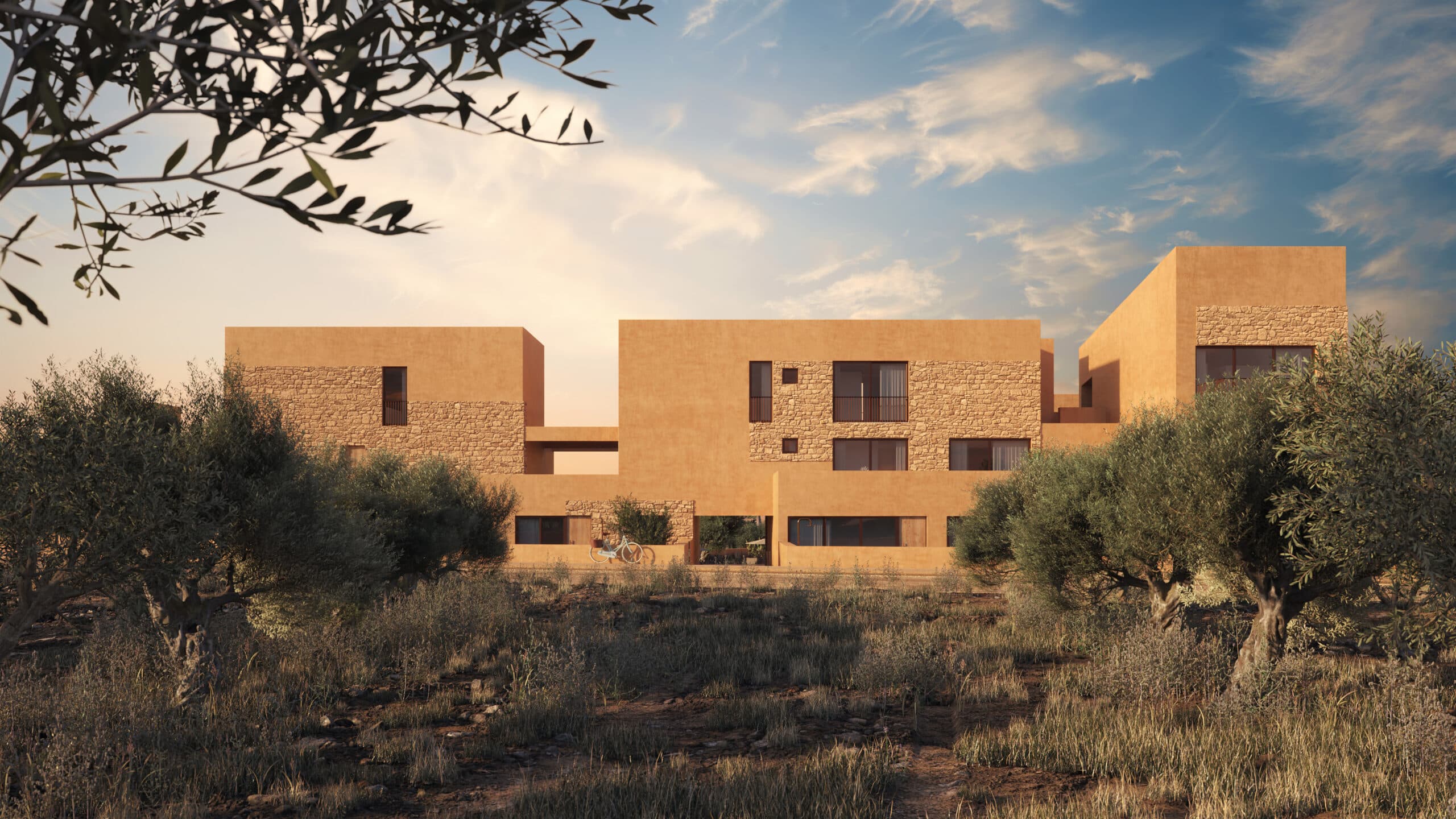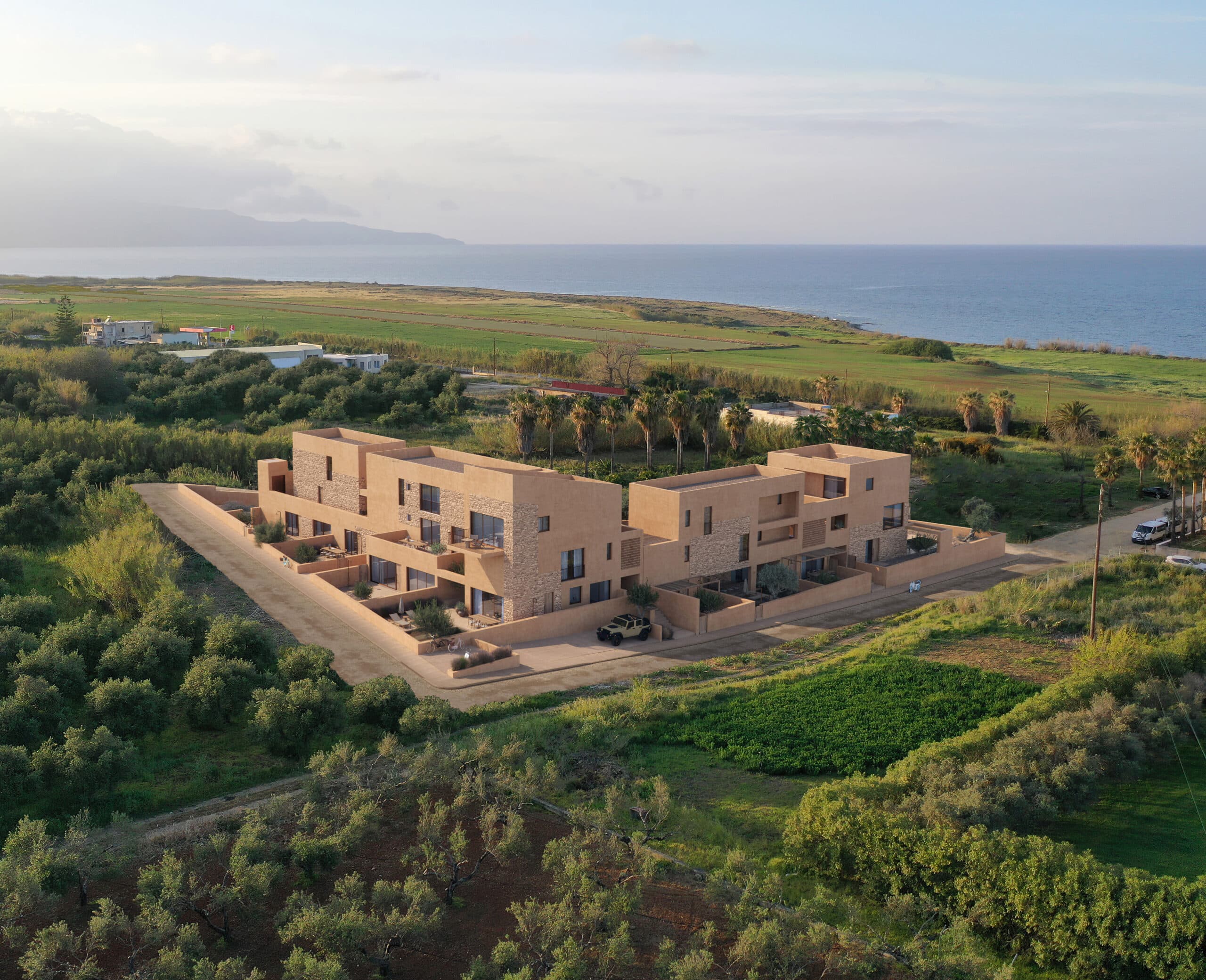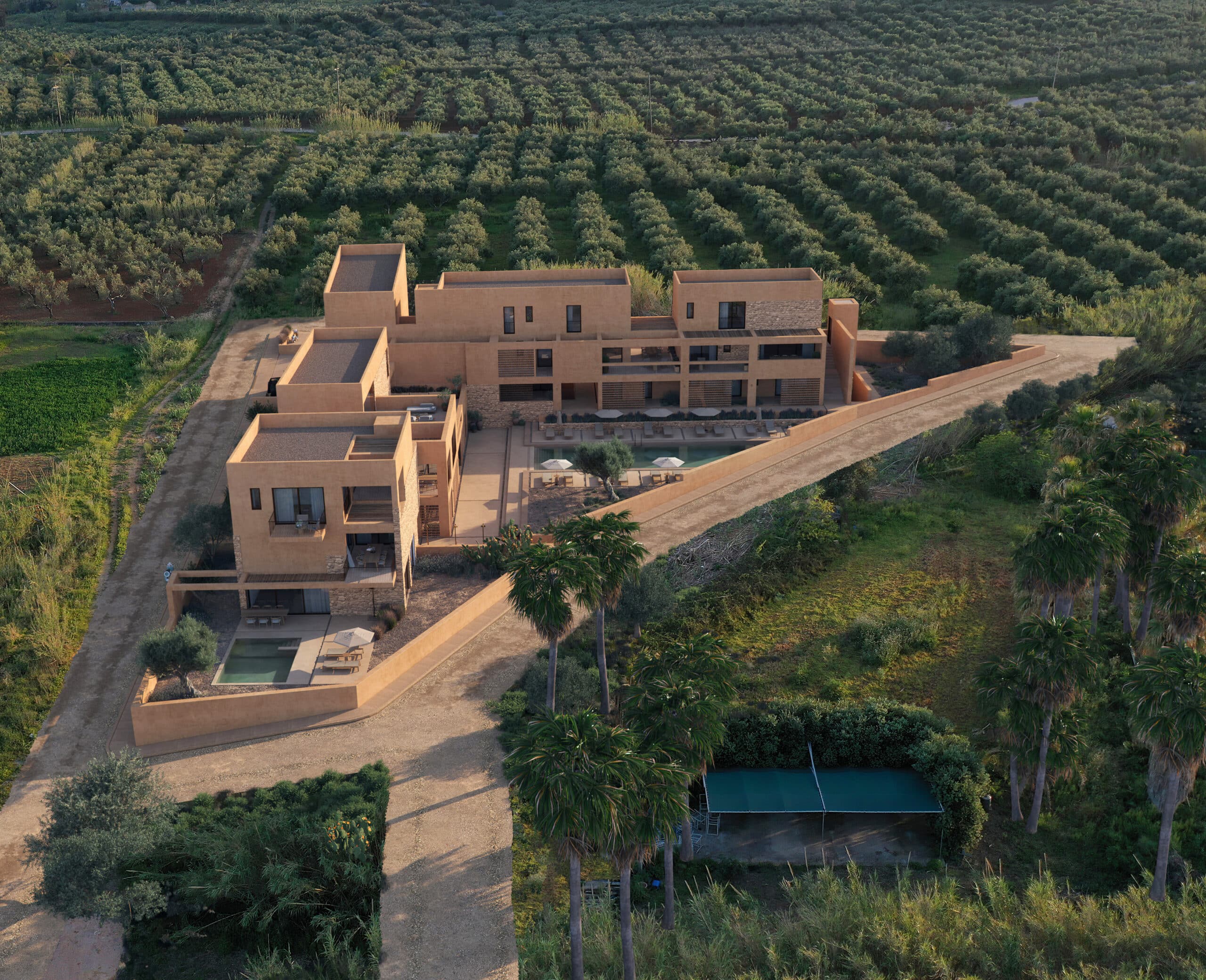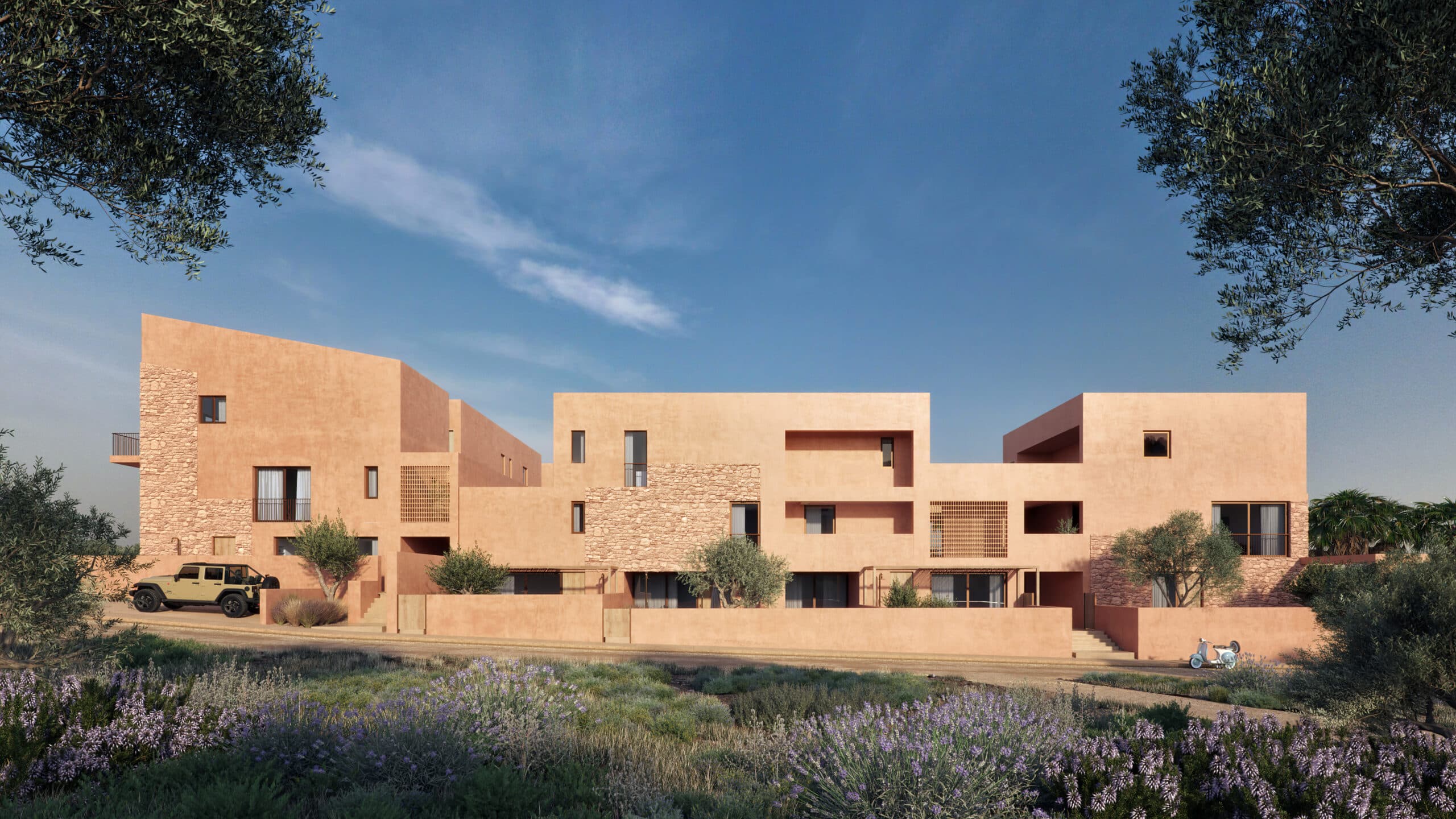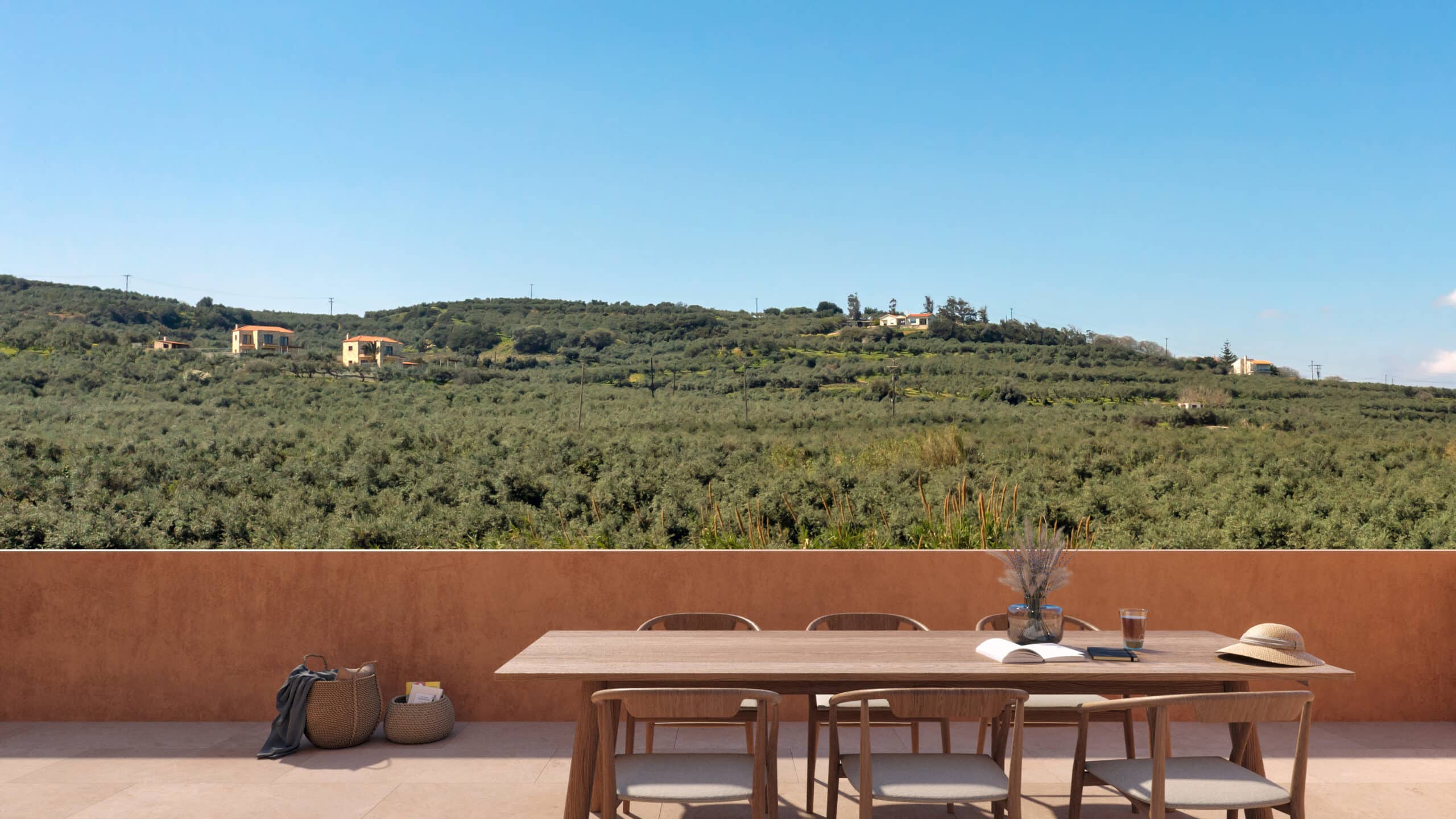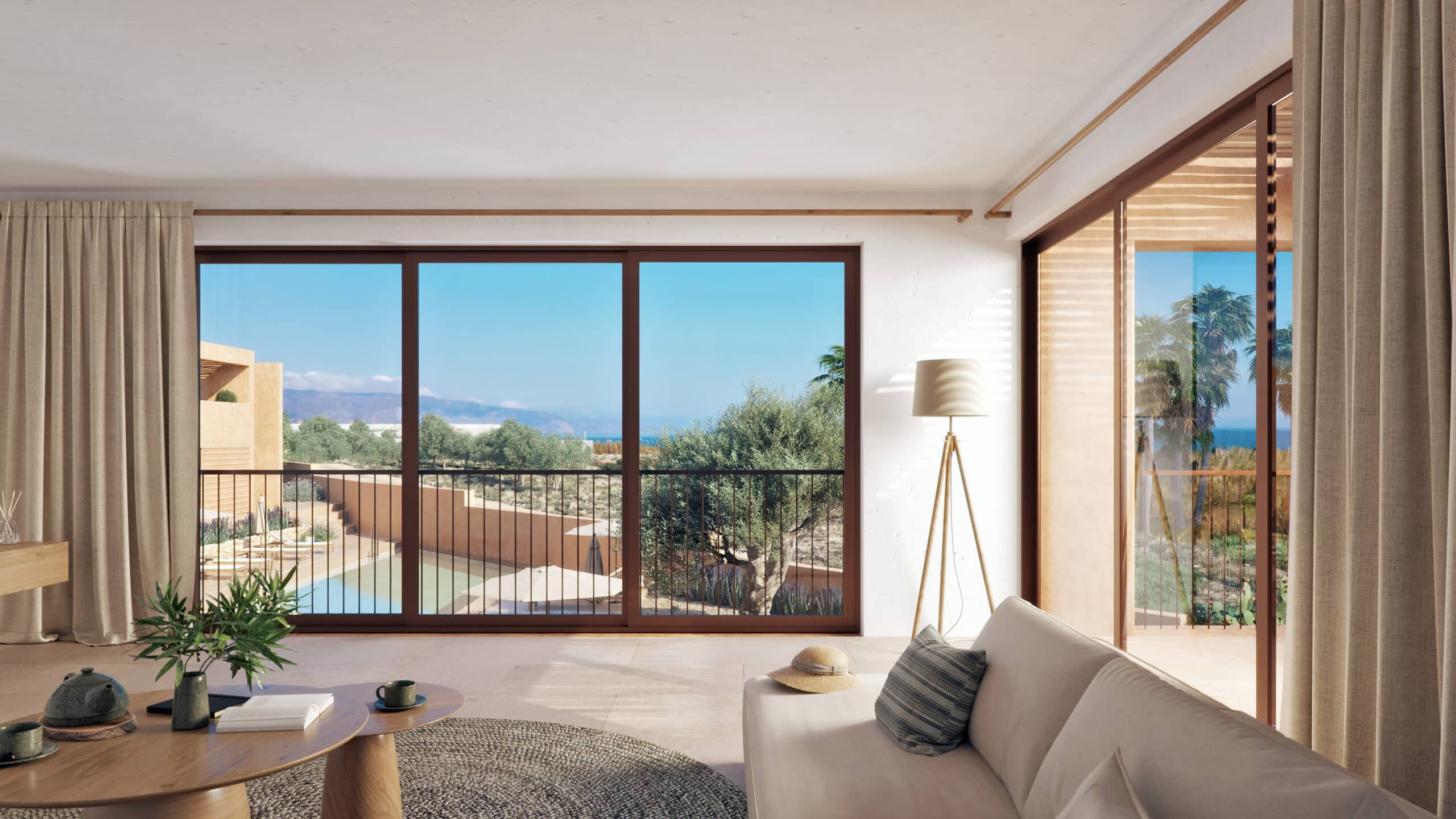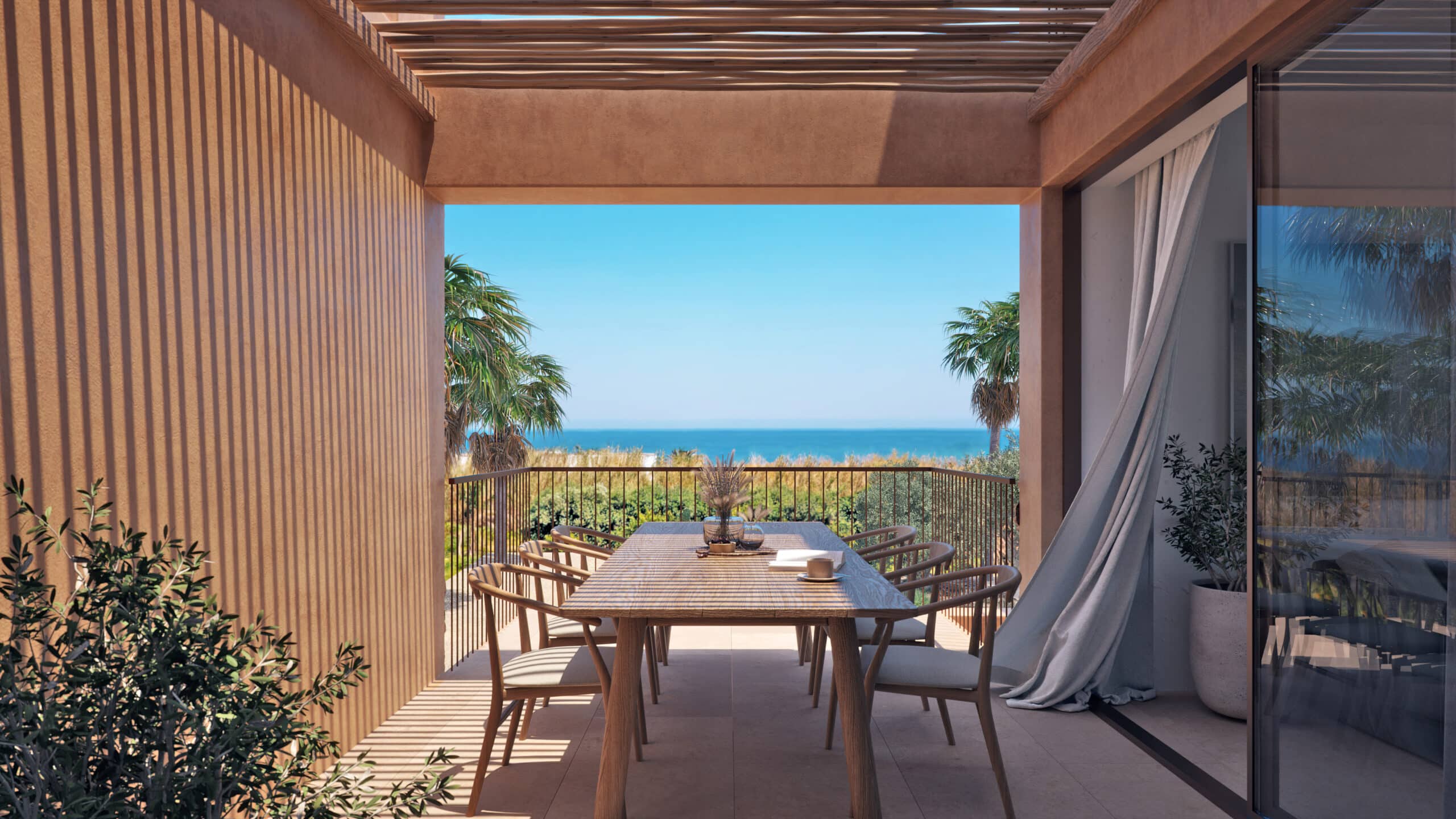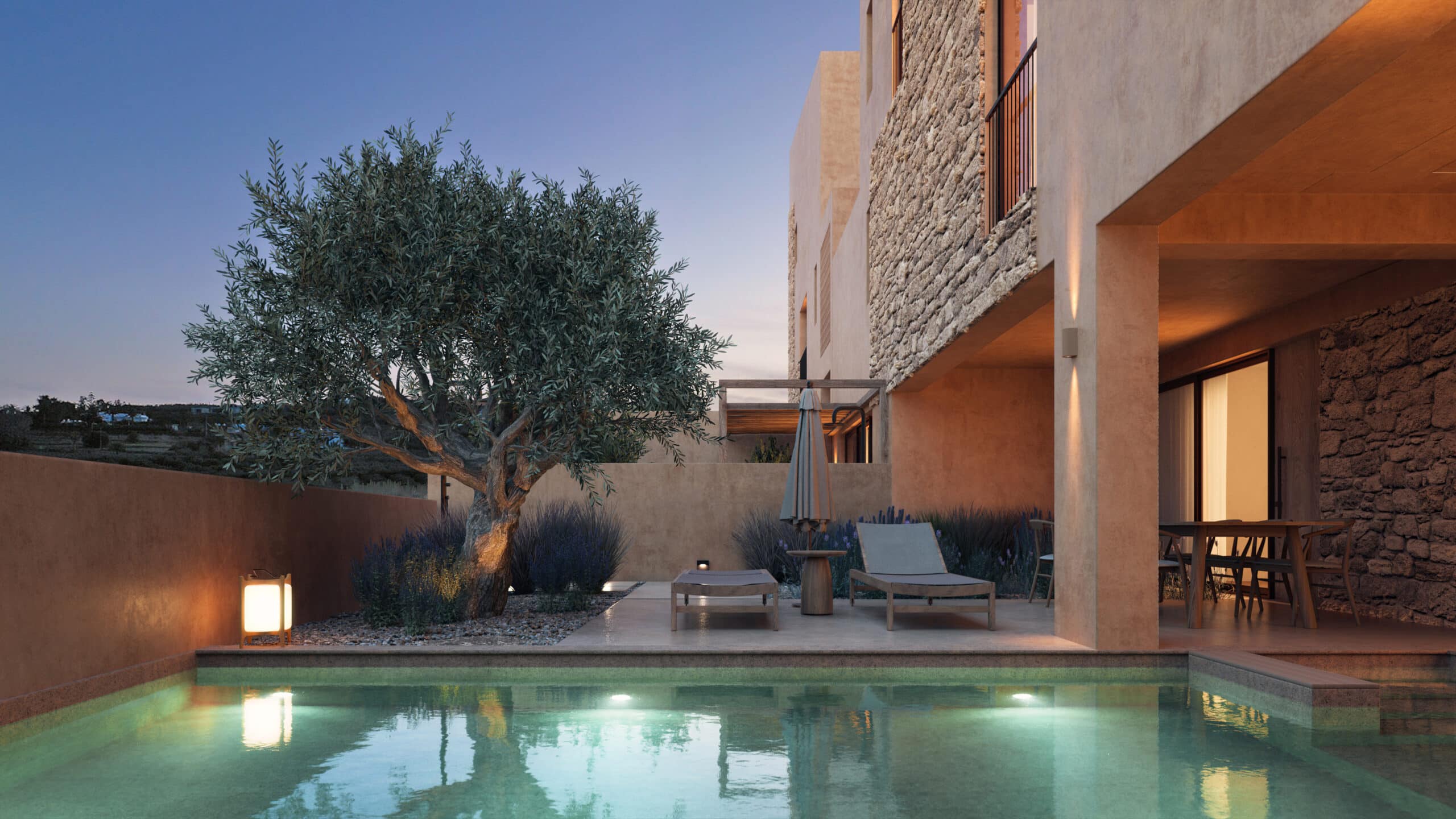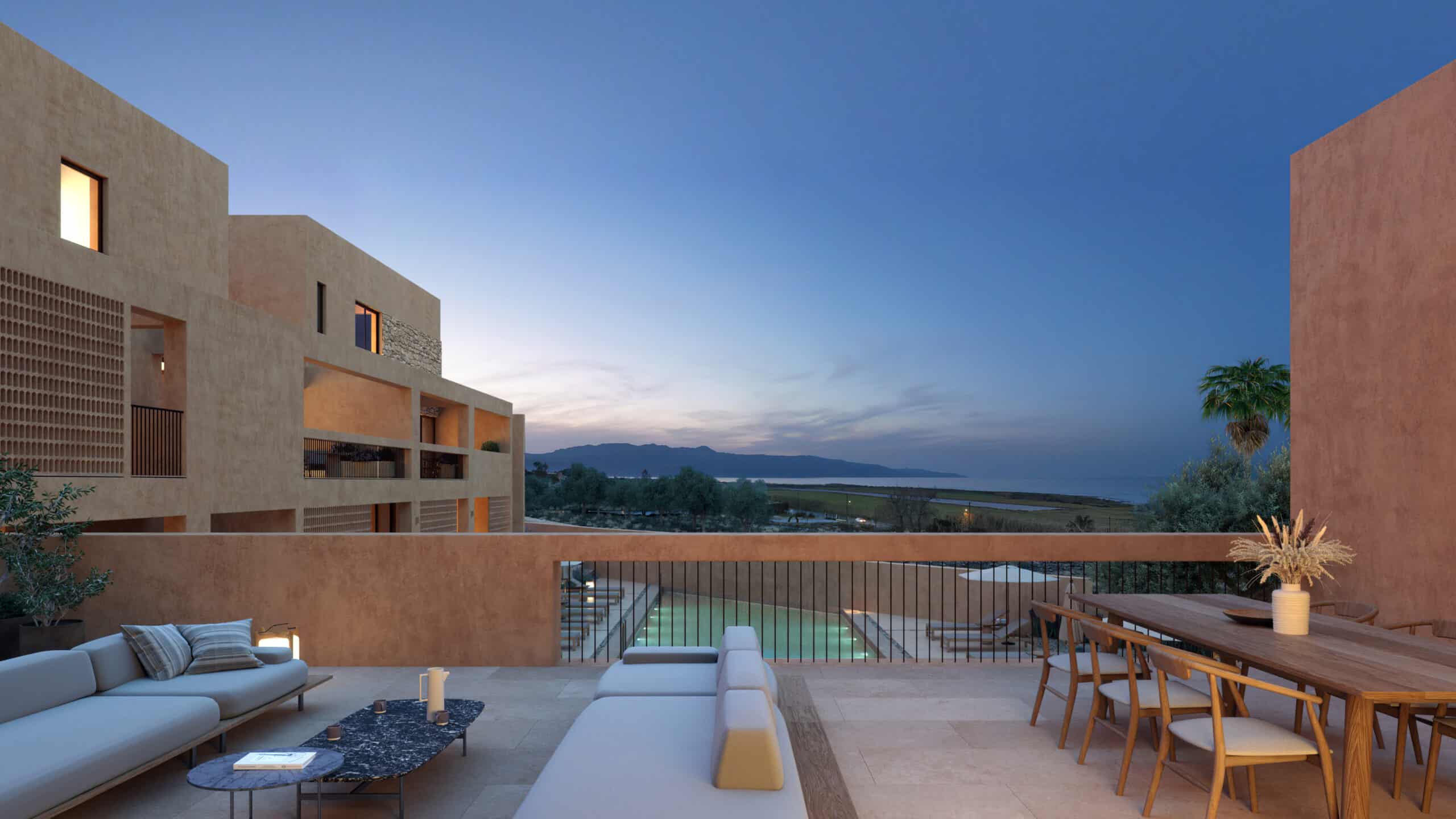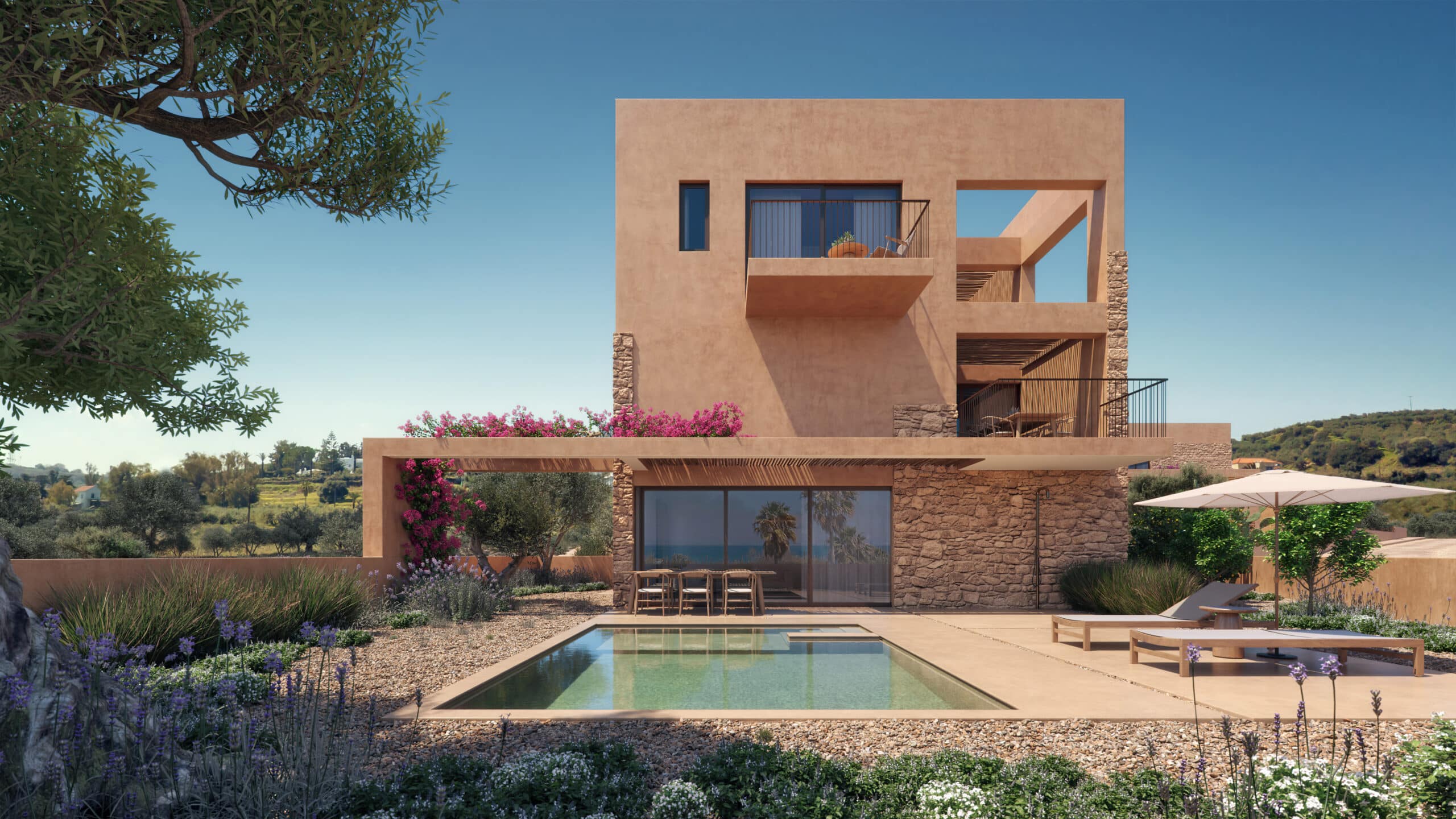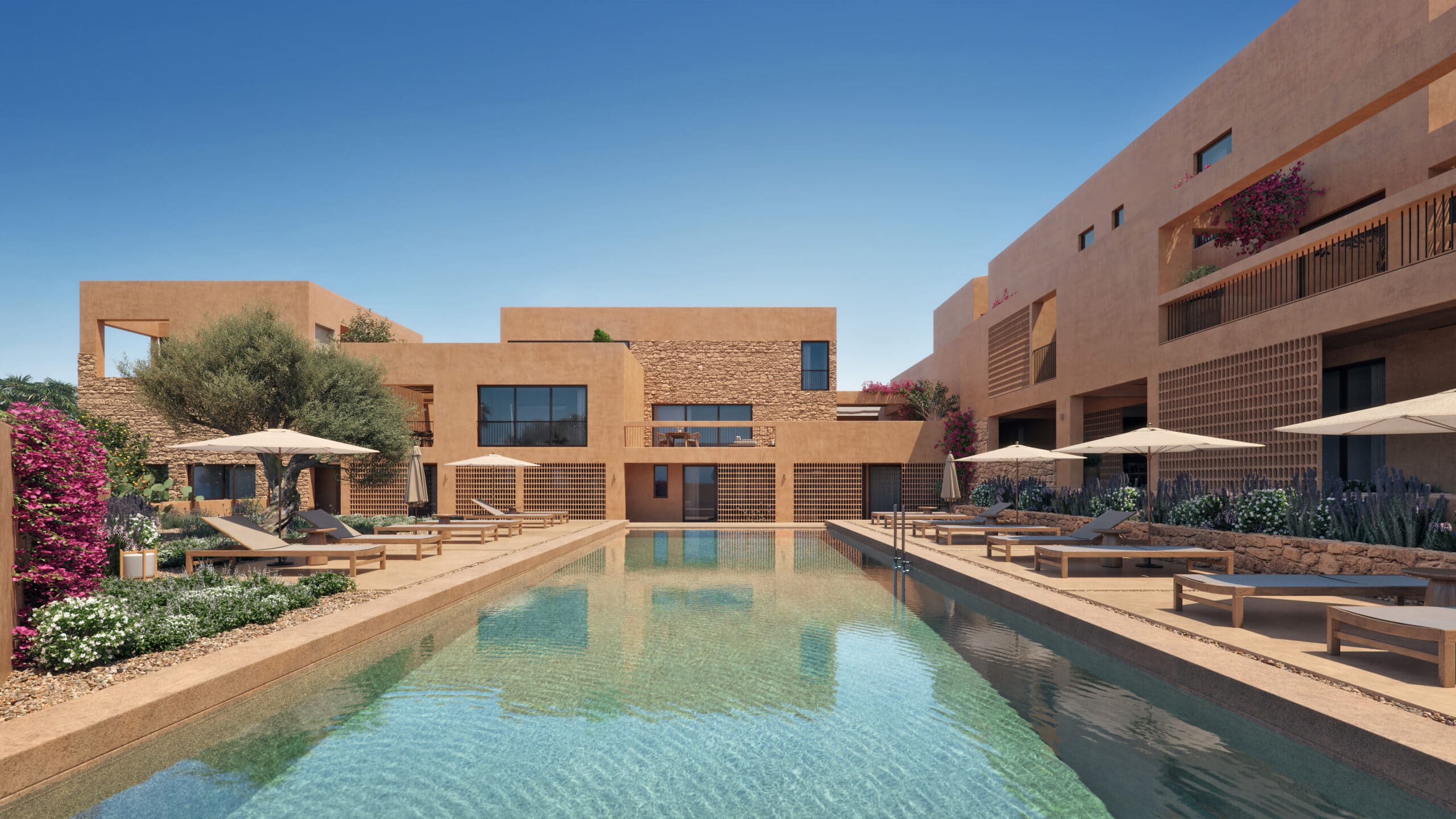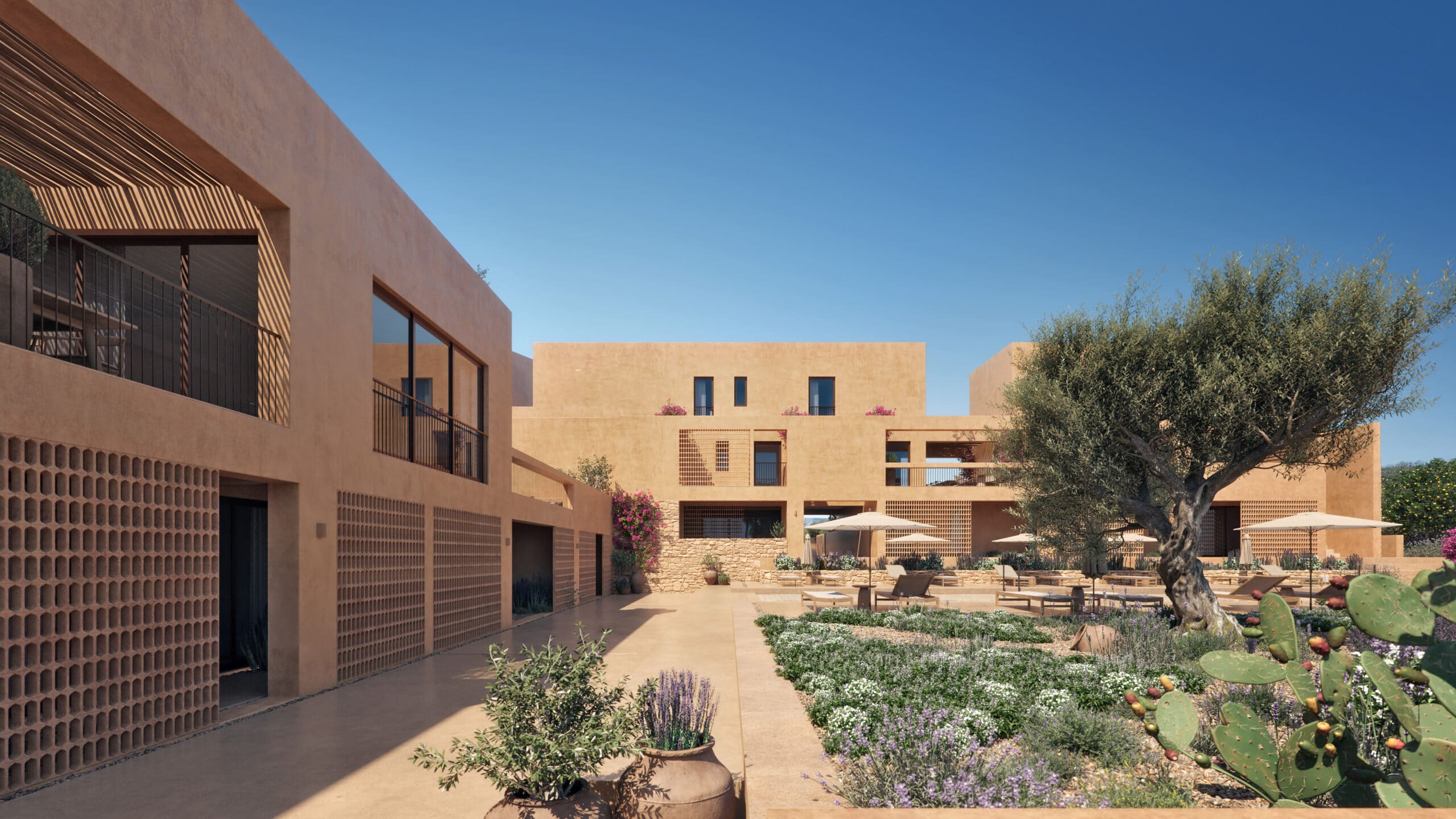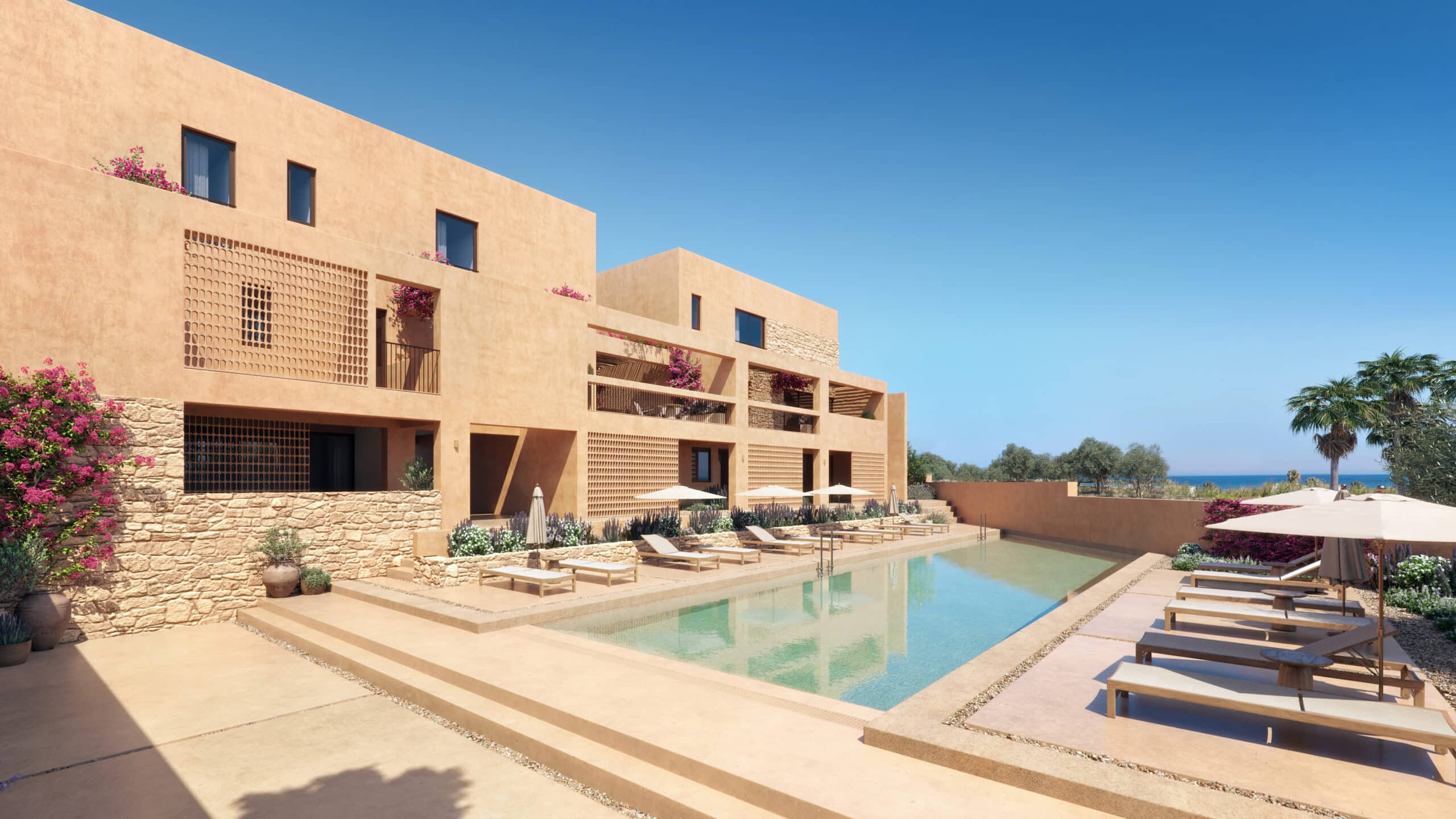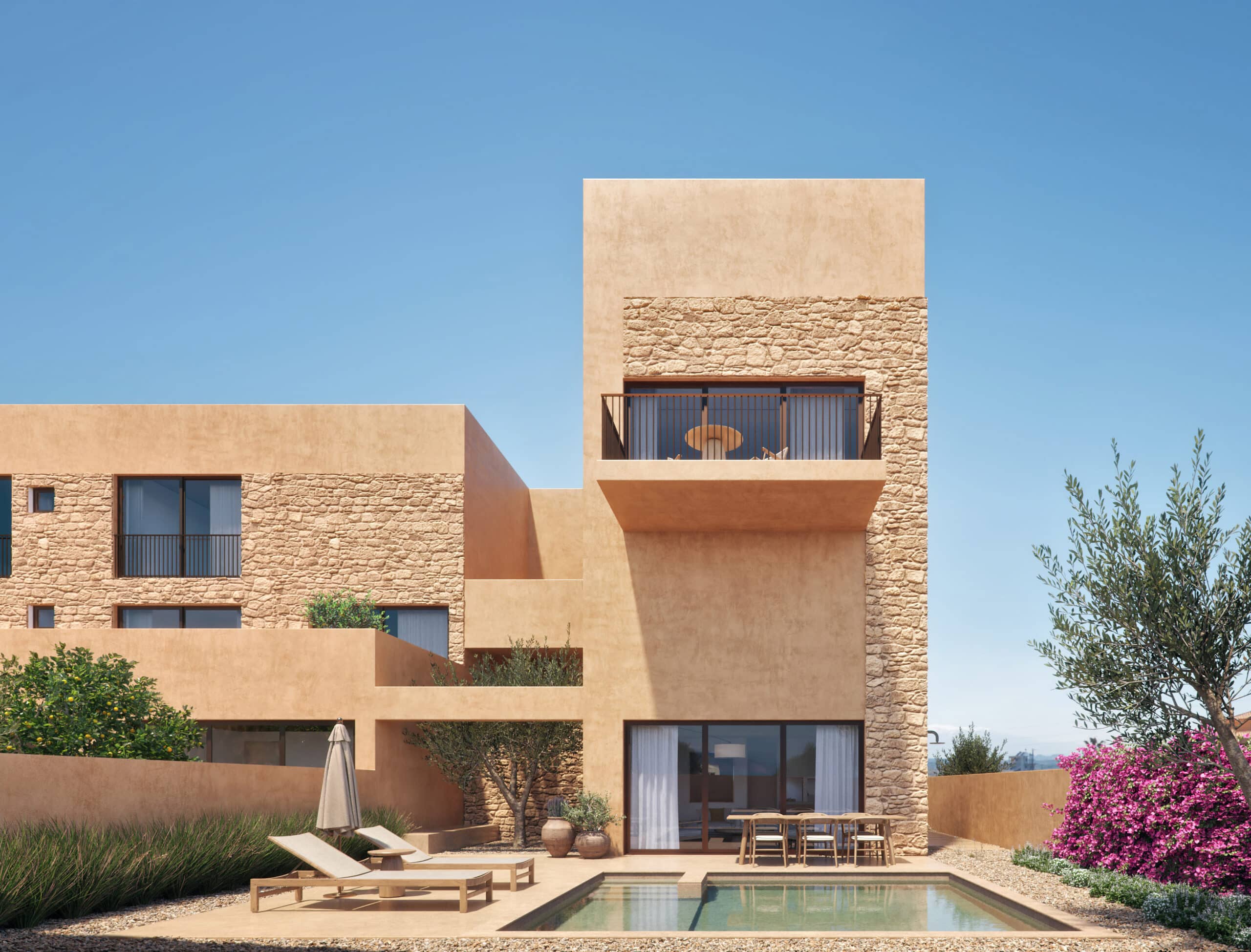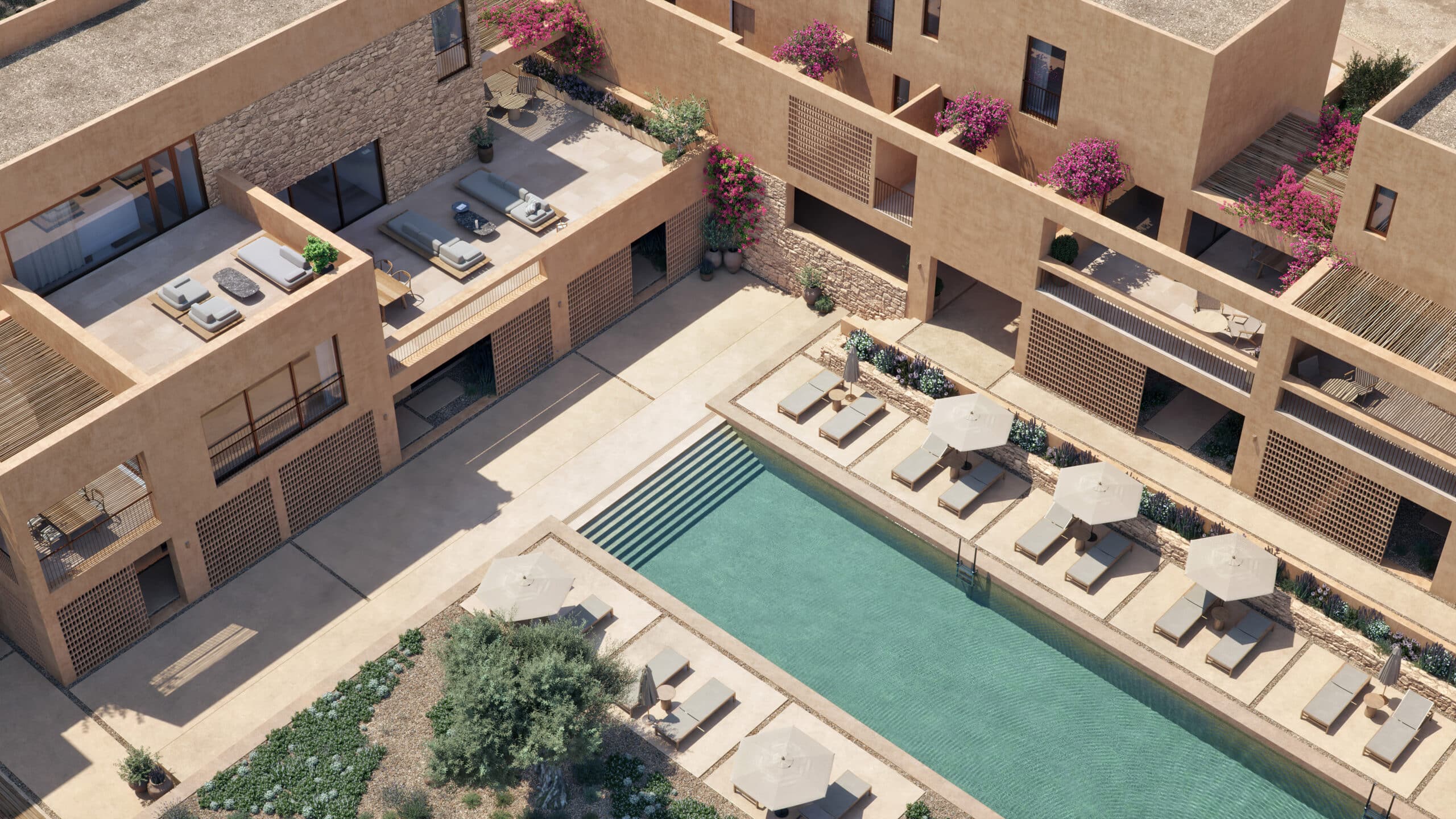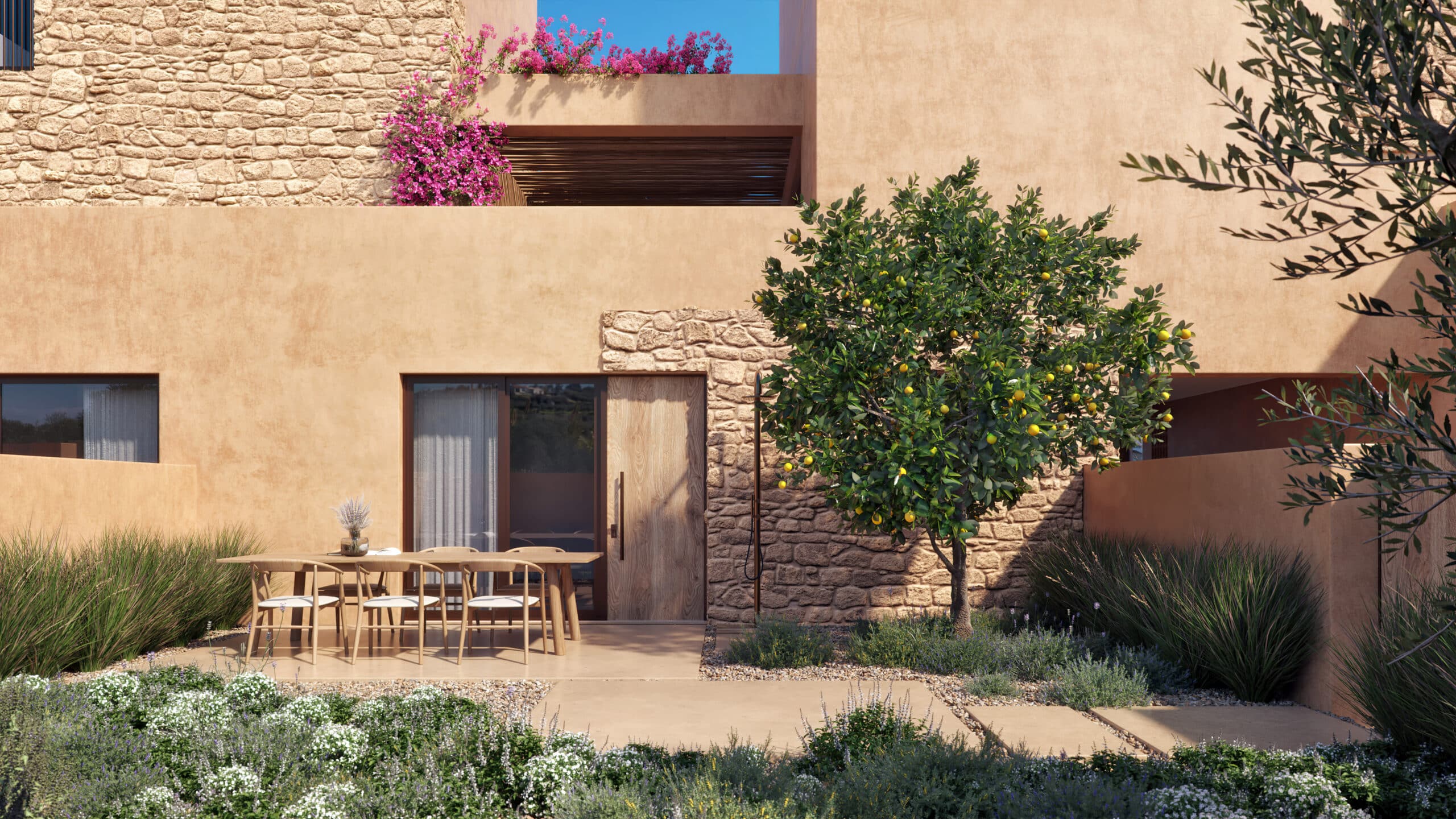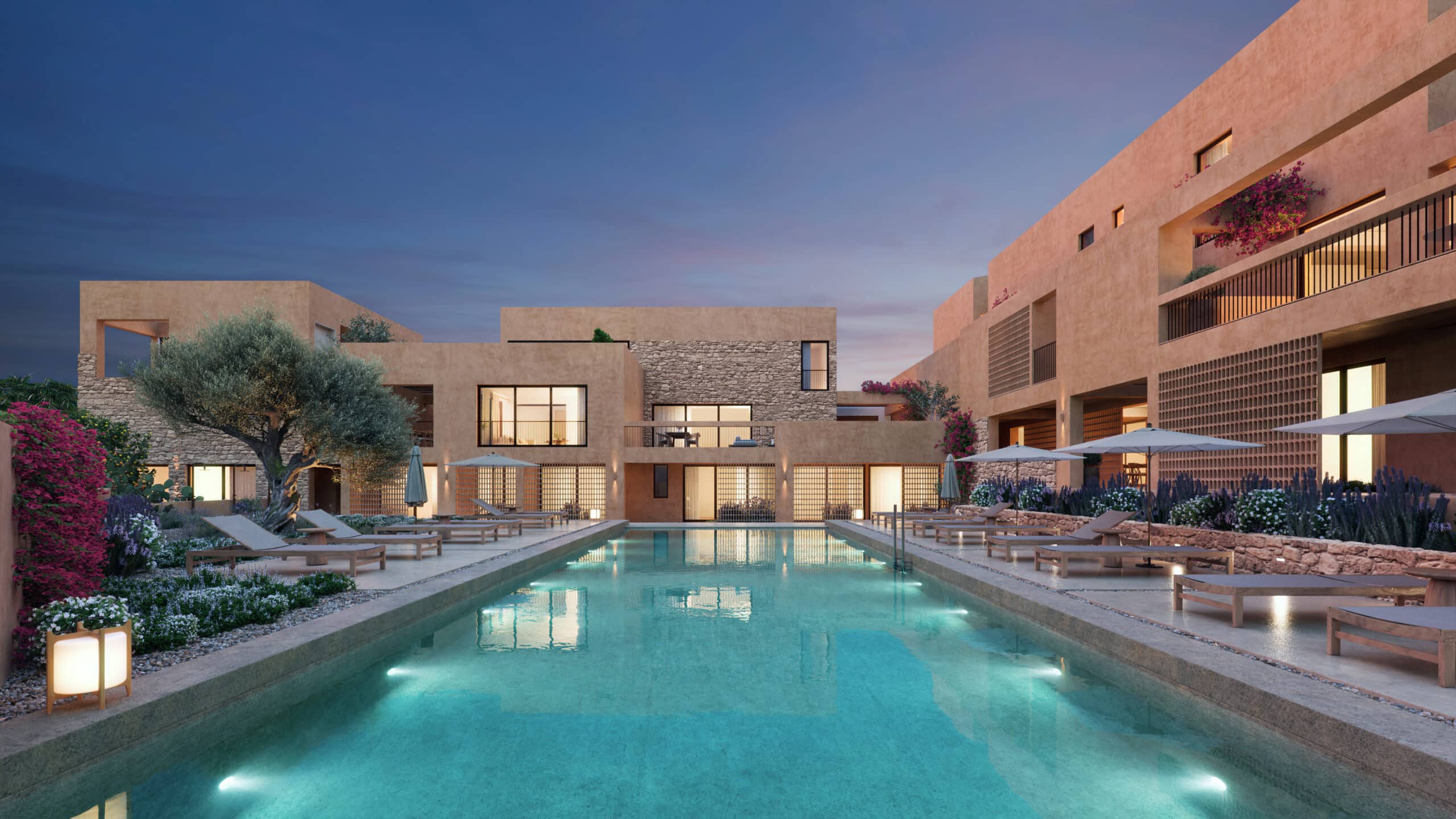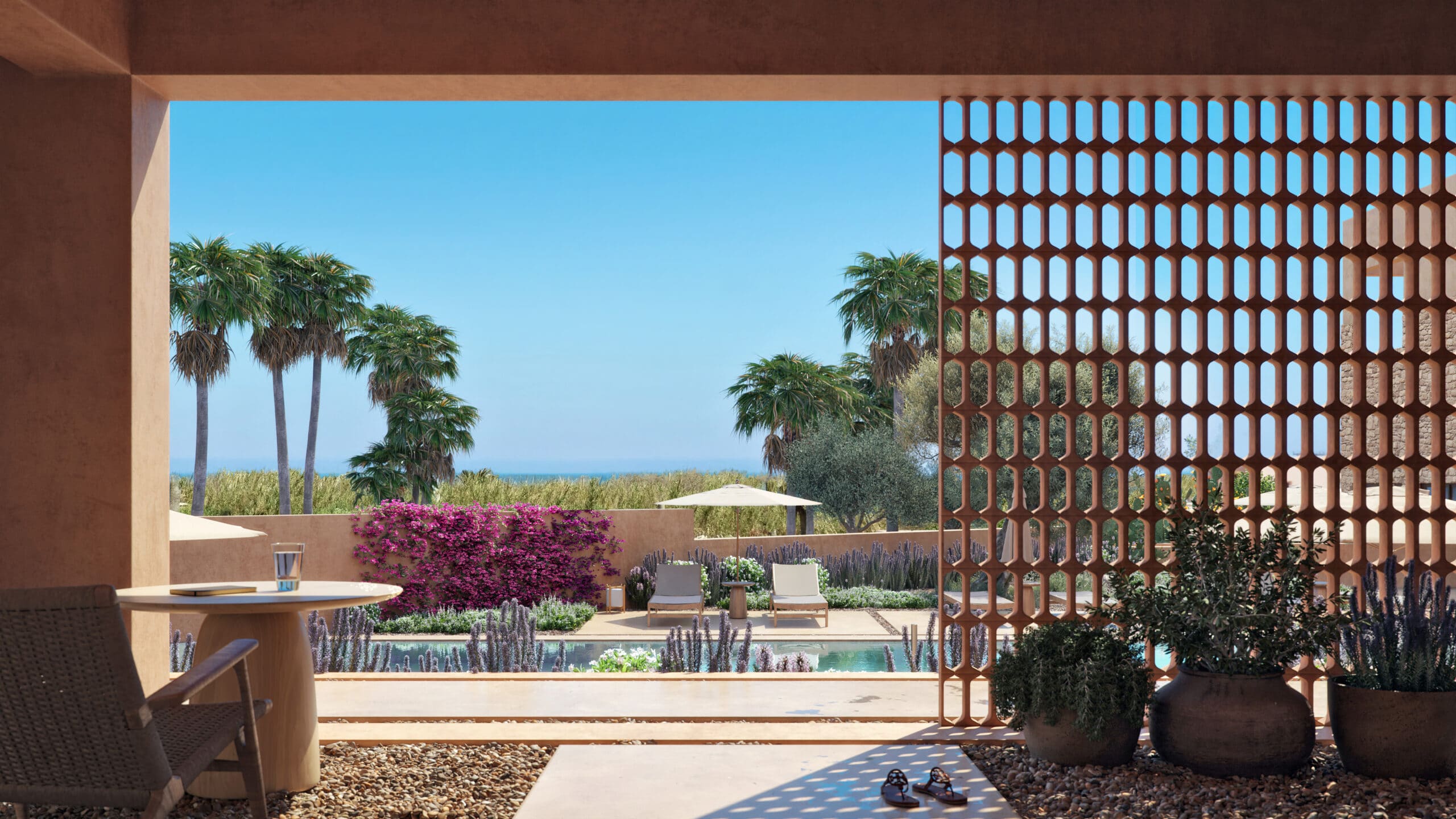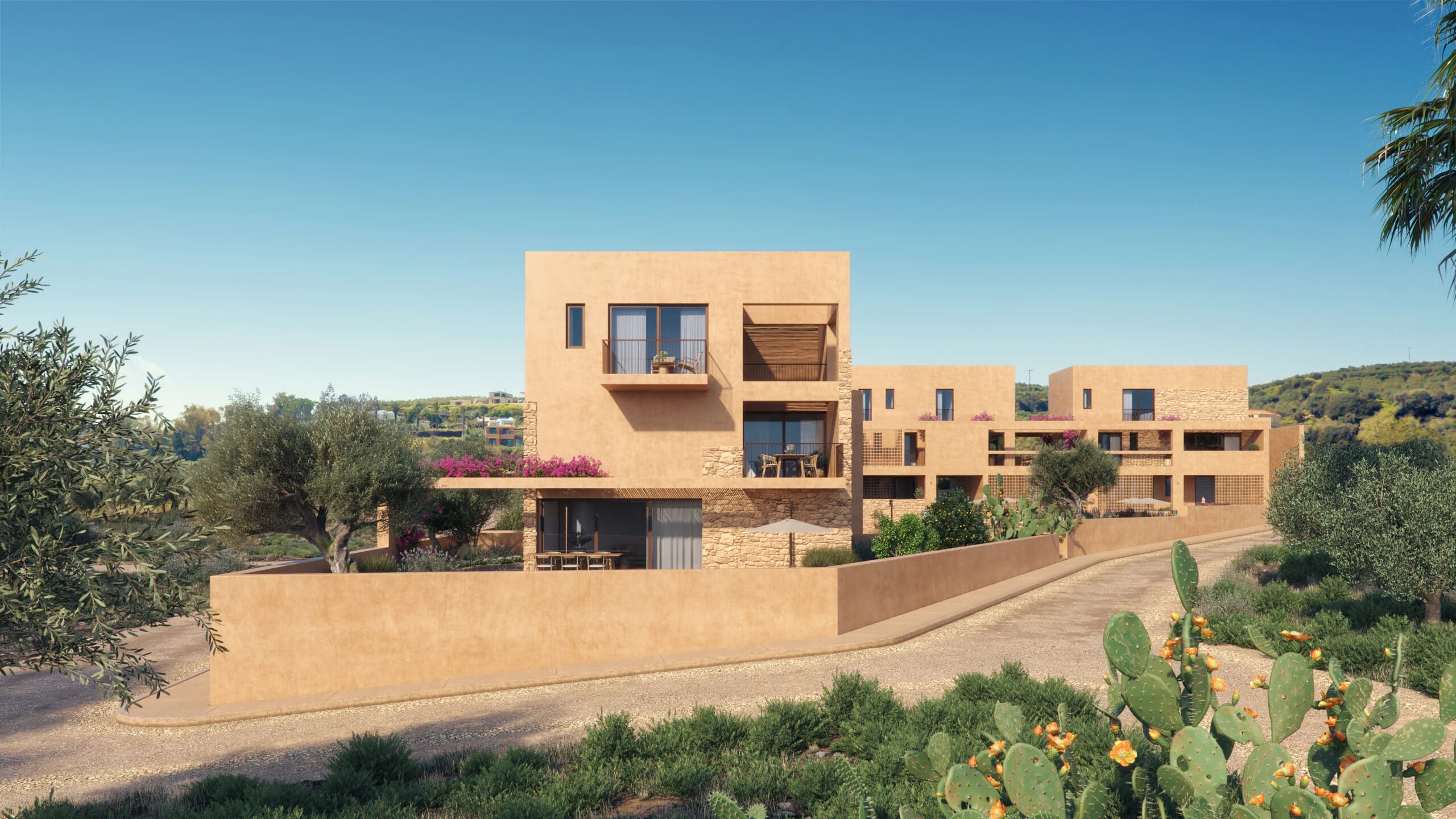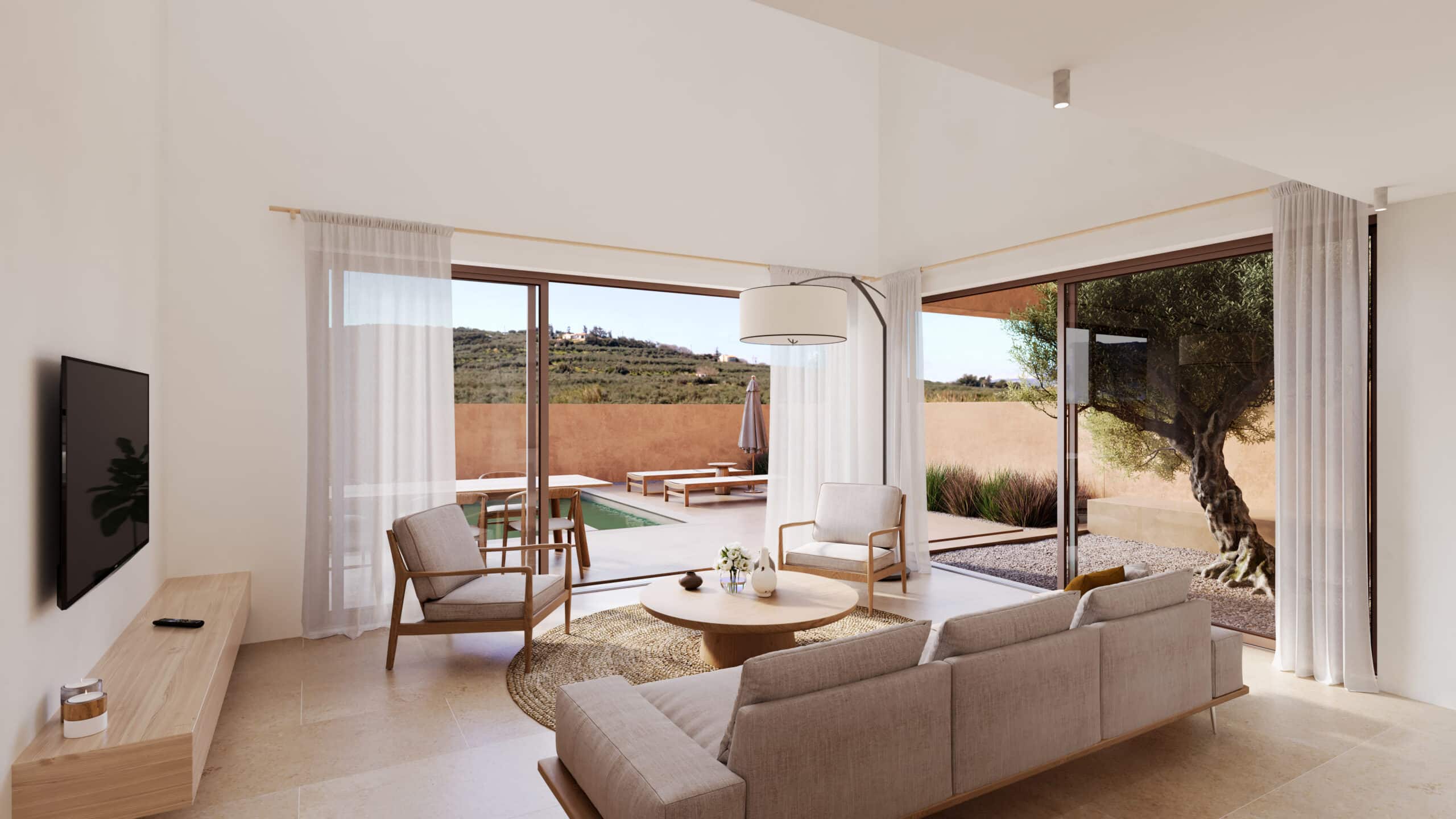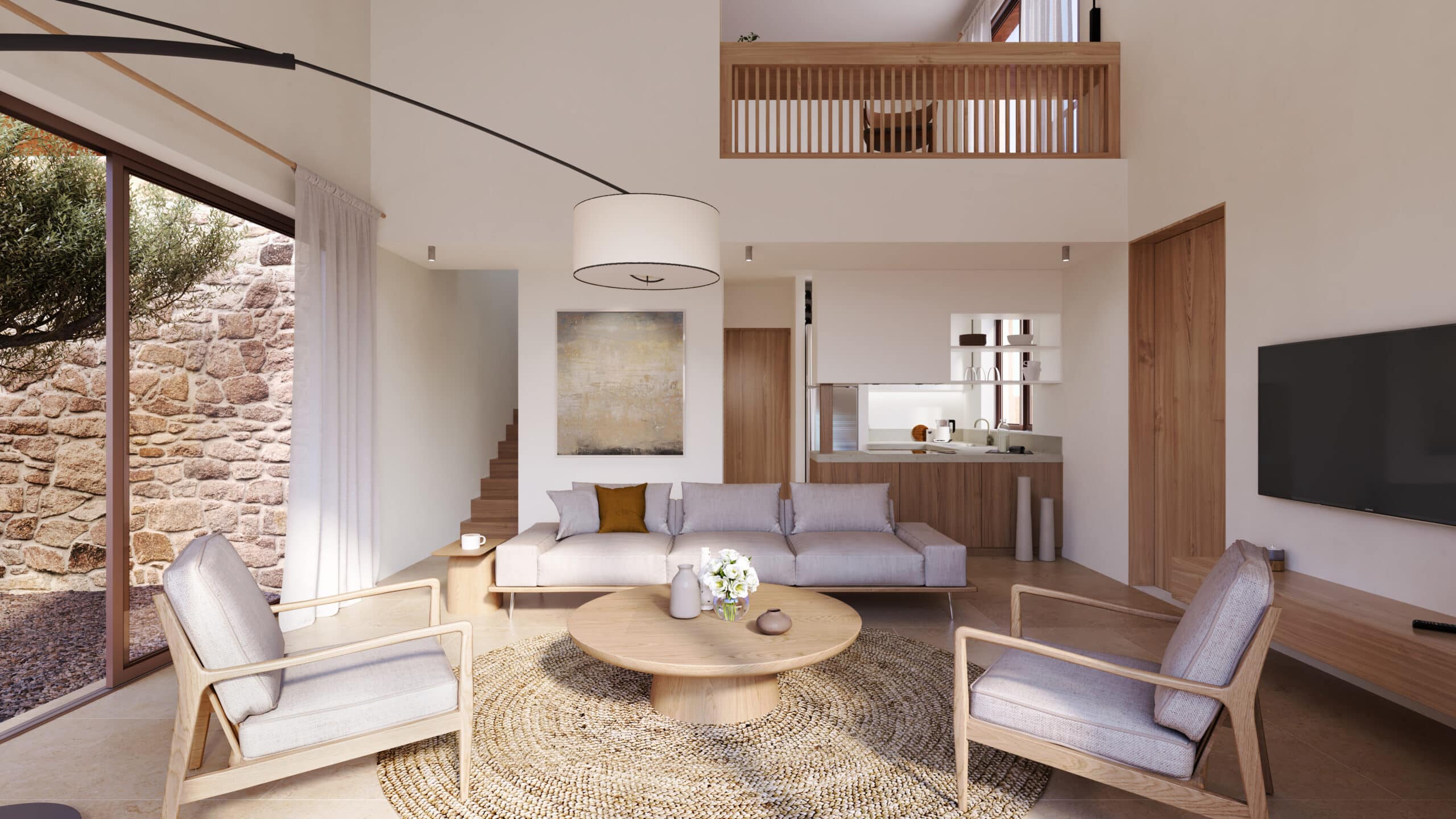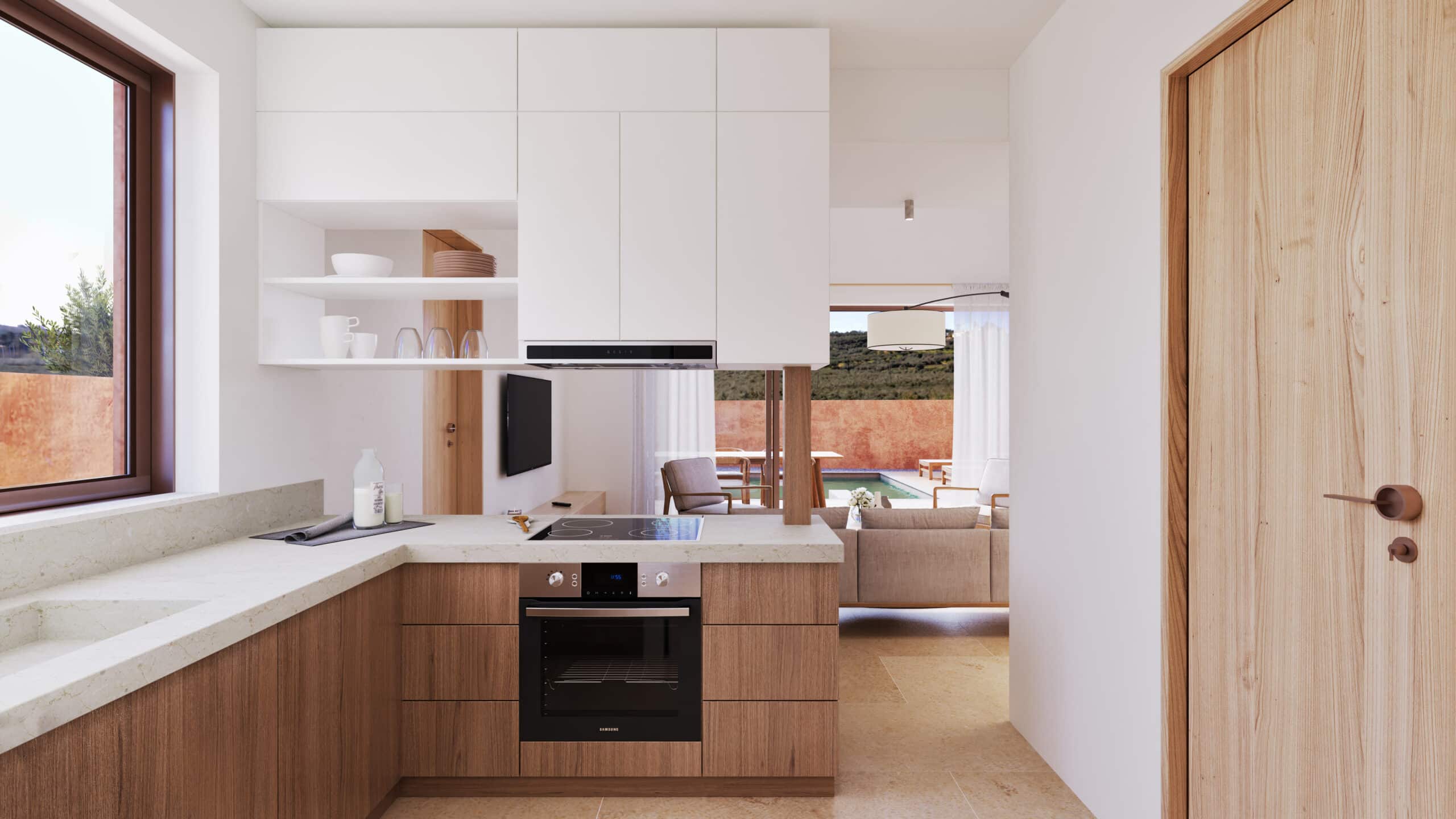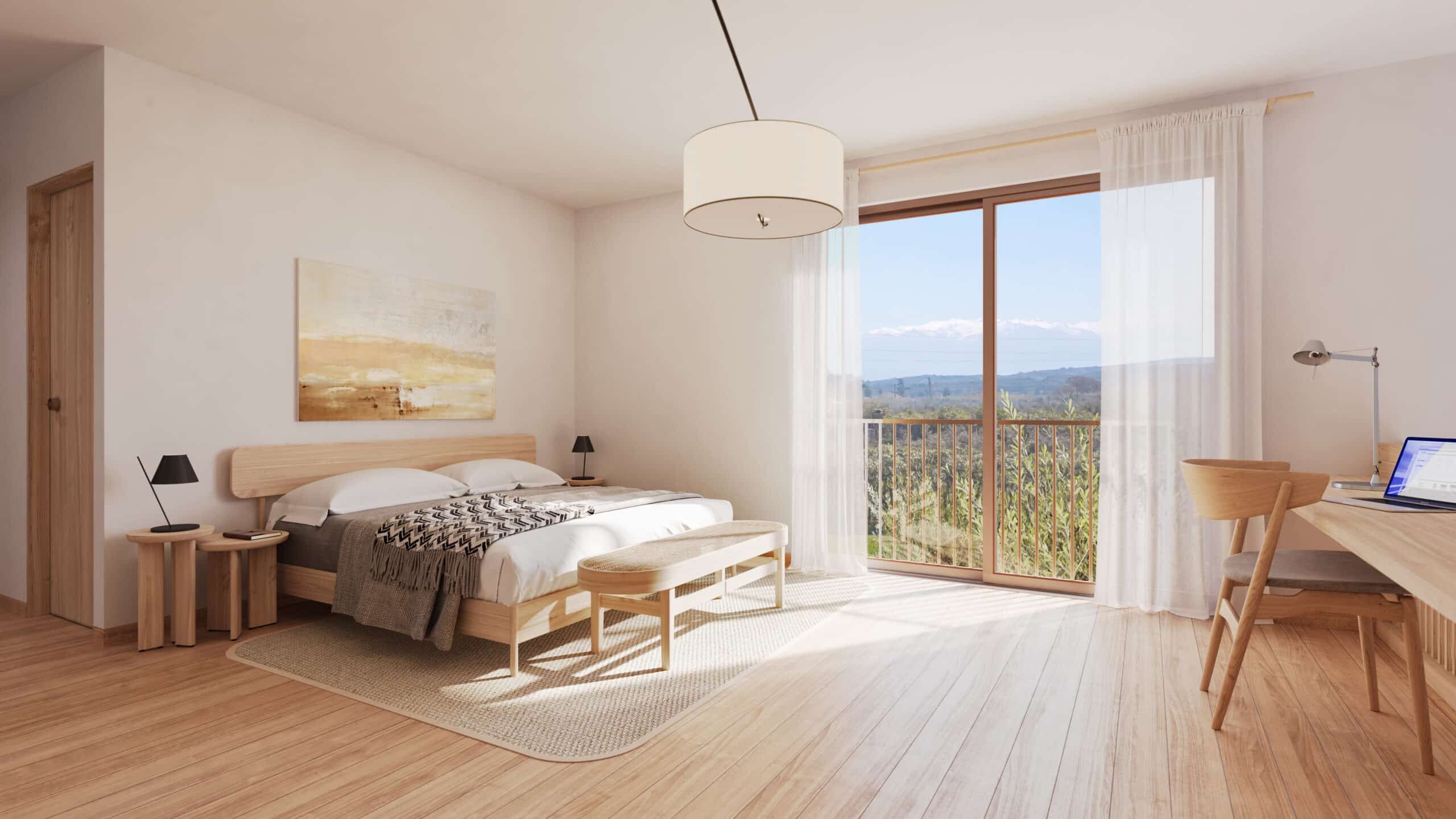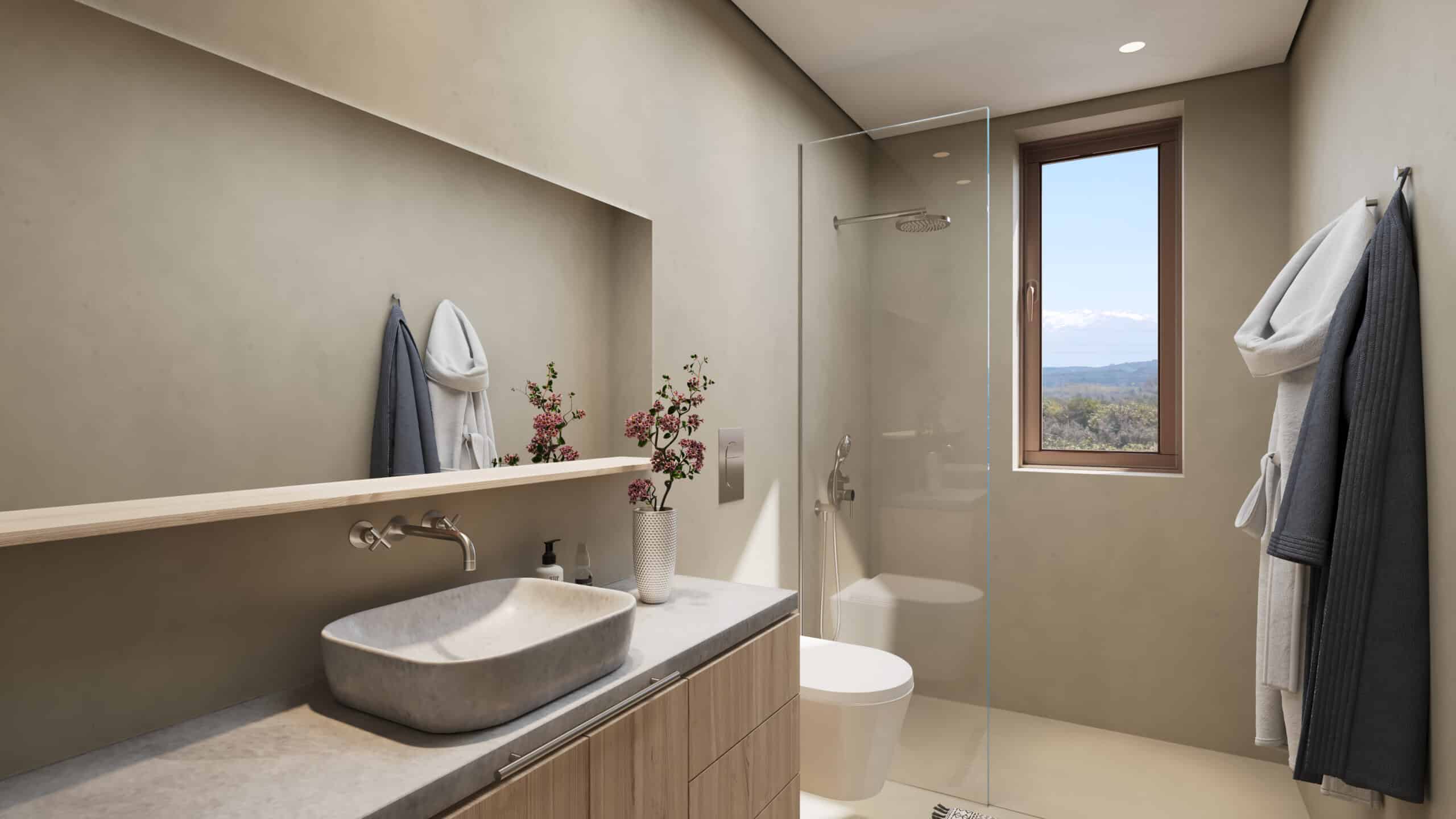Residential Building I, Filopappos Hill - Athens
The building is located on the edge of Filopappou Hill, facing a small park in contact with the western part of the ring road in Ano Petralonas. The area, having been a refugee settlement, consists of small plots of continuous and low building. At the same time, it is located at a special intersection of dense urban fabric and undisturbed natural Athenian landscape.
The requested building program was the construction of two houses in the same building volume.
The immediate proximity and visual contact with the building on Voutie Street, which we designed for the same company two years ago, influenced the design, with the aim of the new building developing a dialectical relationship with the old one, as they share elements of expression, layout and construction.
In a strongly paragonal shape of the site, the new building is organized by the construction of a solid reinforced concrete structure that takes up the obtuse corners of the site and carries utilities and vertical movements. This ensures an orthogonal zone which carries the two-room spaces with maximum transparency, lighting, ventilation and views.
The roof is planted conceptually continuing the vegetation of the hill, the day-use spaces continue in balconies across their width, bringing the views of the hill inside and the creation of a naturalistic garden provides analogous relationships within the building.
Finally, the materiality of the building expresses its functions, both through the exposed concrete elements of the building’s frame and through the incorporation and concealment of ancillary functions internally through structures that can alter the use of the spaces.
Credits
Title & Location :
Residential Building I, Filopappos Hill – Athens
DESIGN TEAM
Dimitris Thomopoulos
Nikoletta Kanellou
Annie Roussou
Loukia Lhomme
Athanasia Psaraki
Construction: Kalamaras E. & Georgakopoulos D. OE
Photographer: Caroline May
Client: Private
Total Area: 268,83 m²
Design period: 2009
Residential Building I, Filopappos Hill - Athens




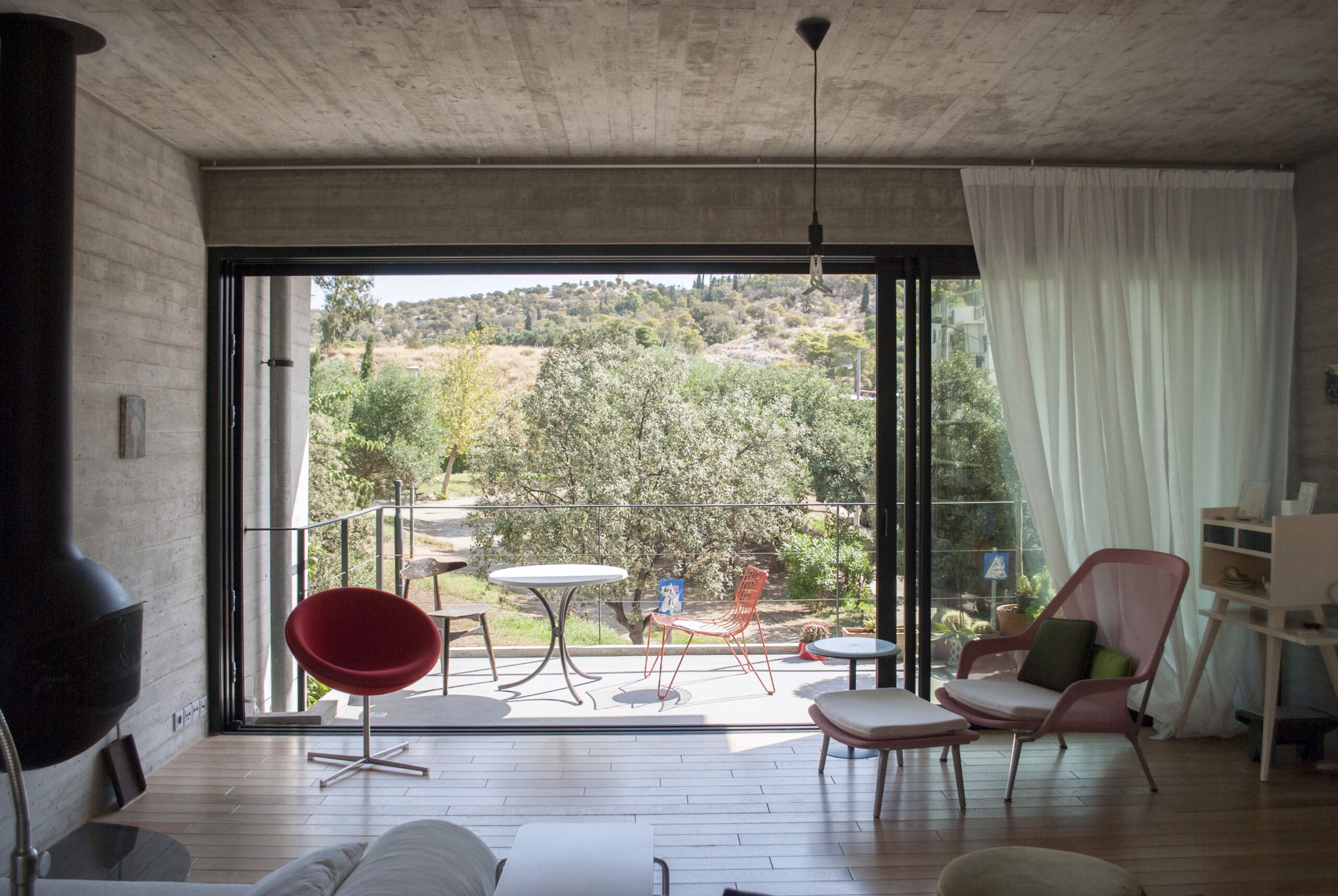

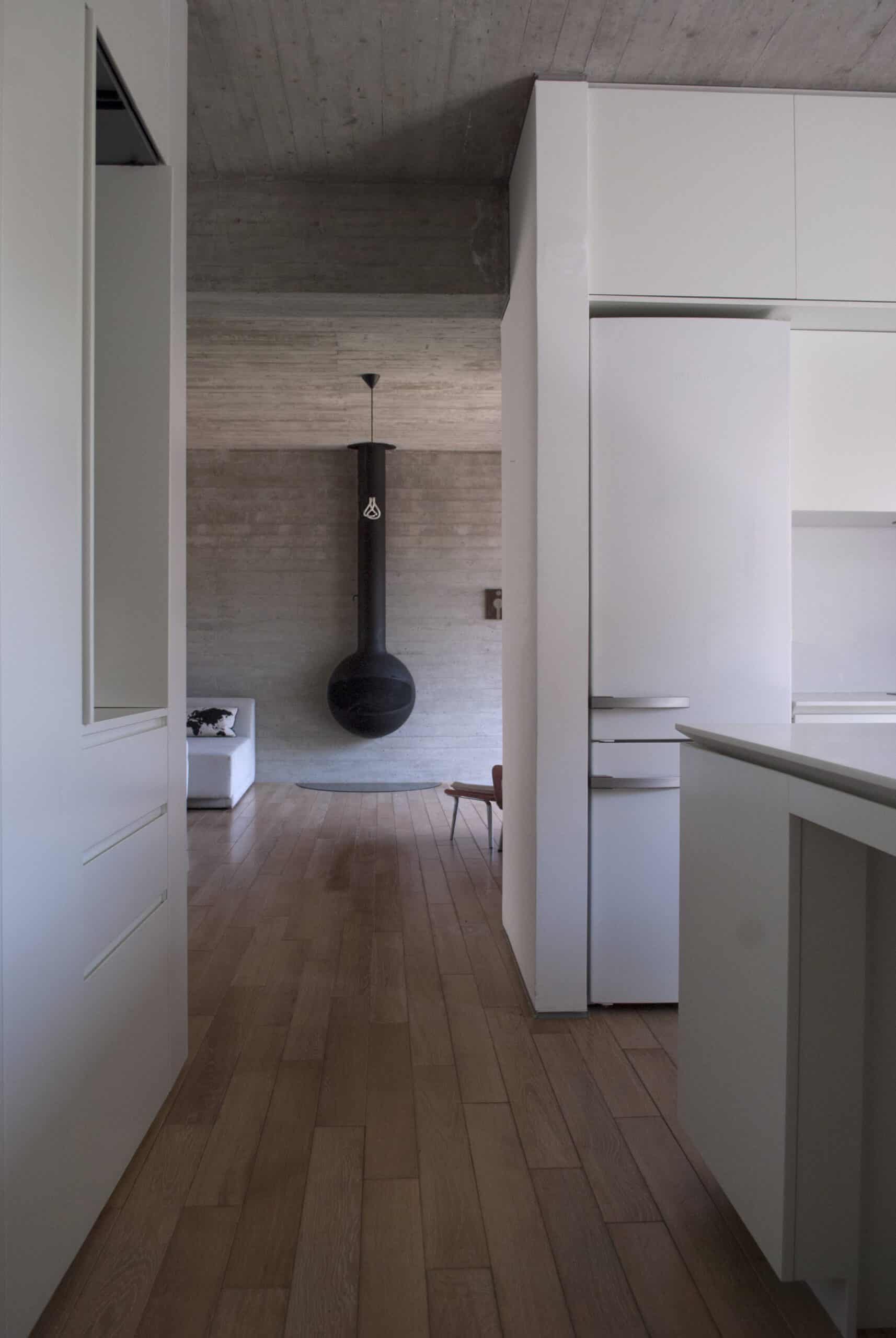

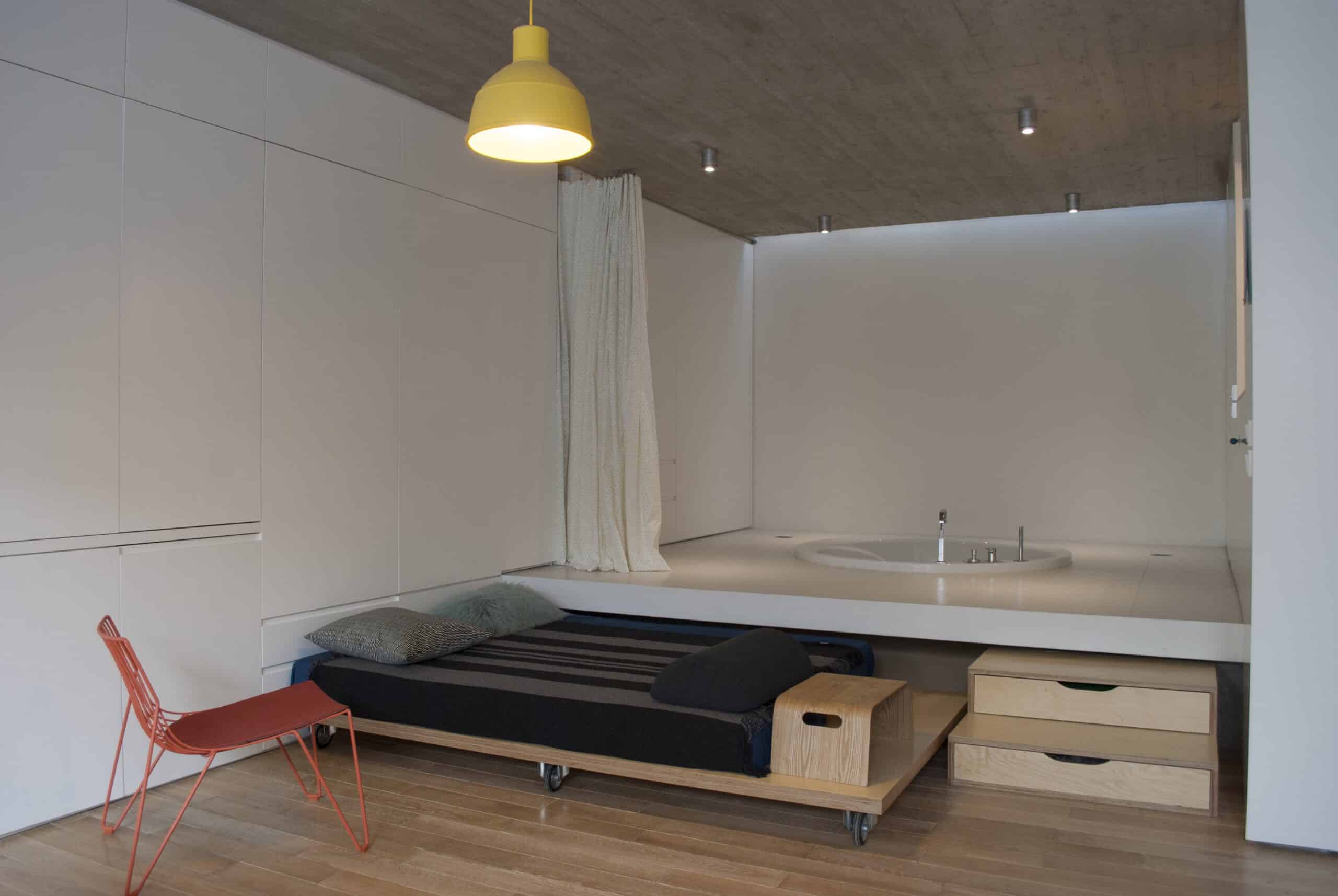

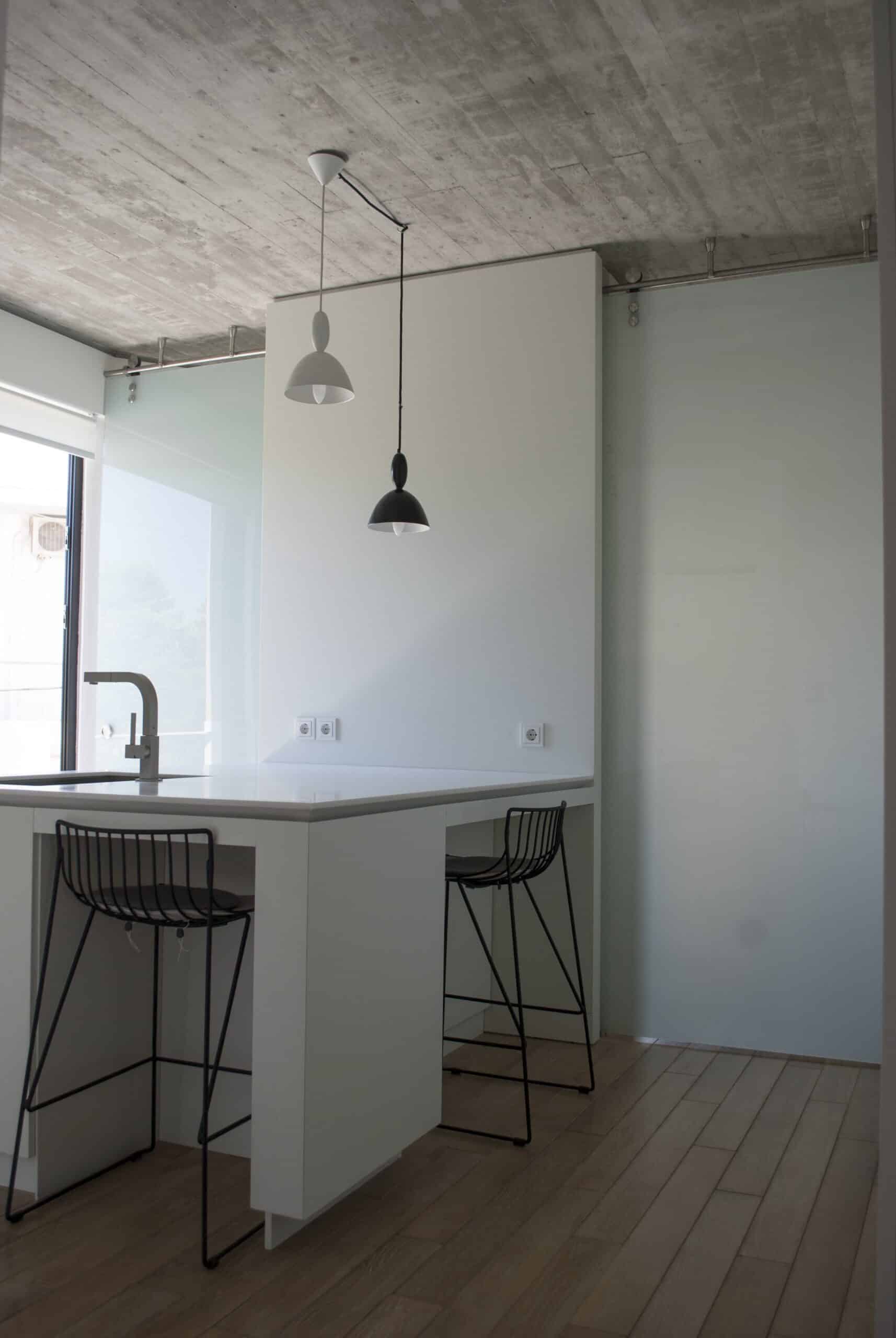









The building is located on the edge of Filopappou Hill, facing a small park in contact with the western part of the ring road in Ano Petralonas. The area, having been a refugee settlement, consists of small plots of continuous and low building. At the same time, it is located at a special intersection of dense urban fabric and undisturbed natural Athenian landscape.
The requested building program was the construction of two houses in the same building volume.
The immediate proximity and visual contact with the building on Voutie Street, which we designed for the same company two years ago, influenced the design, with the aim of the new building developing a dialectical relationship with the old one, as they share elements of expression, layout and construction.
In a strongly paragonal shape of the site, the new building is organized by the construction of a solid reinforced concrete structure that takes up the obtuse corners of the site and carries utilities and vertical movements. This ensures an orthogonal zone which carries the two-room spaces with maximum transparency, lighting, ventilation and views.
The roof is planted conceptually continuing the vegetation of the hill, the day-use spaces continue in balconies across their width, bringing the views of the hill inside and the creation of a naturalistic garden provides analogous relationships within the building.
Finally, the materiality of the building expresses its functions, both through the exposed concrete elements of the building’s frame and through the incorporation and concealment of ancillary functions internally through structures that can alter the use of the spaces.
Title & Location :
Residential Building I, Filopappos Hill – Athens
DESIGN TEAM
Dimitris Thomopoulos
Nikoletta Kanellou
Annie Roussou
Loukia Lhomme
Athanasia Psaraki
Construction: Kalamaras E. & Georgakopoulos D. OE
Photographer: Caroline May
Client: Private
Total Area: 268,83 m²
Design period: 2009
Olealand Residences, Crete
Βασική αναφορά για την αρχιτεκτονική σύνθεση του συγκροτήματος αποτελεί η παραδοσιακή αγροτική κατοικία της Κρήτης. Μελετώντας αυτό το πρότυπο αναφοράς, εντοπίζονται τα βασικά του χαρακτηριστικά και μέσω του σχεδιασμού, επιχειρείται η επανερμηνεία τους και η απόδοση τους σε μια σύγχρονη εκδοχή κατοικίας.
Βασική αναφορά για την αρχιτεκτονική σύνθεση του συγκροτήματος αποτελεί η παραδοσιακή αγροτική κατοικία της Κρήτης. Μελετώντας αυτό το πρότυπο αναφοράς, εντοπίζονται τα βασικά του χαρακτηριστικά και μέσω του σχεδιασμού, επιχειρείται η επανερμηνεία τους και η απόδοση τους σε μια σύγχρονη εκδοχή κατοικίας. Το λαϊκό Κρητικό σπίτι είναι λιτό και οργανώνεται σε απλή κυβική μορφή. Εισέρχεται κανείς σε αυτό μέσω ενός περιμετρικού τοίχου που οδηγεί στην εσωτερική αυλή και έπειτα στην κατοικία. Η διαβάθμιση της ιδιωτικότητας από το εξωτερικό προς το εσωτερικό, καθώς και ο ρόλος του δώματος ως στοιχείο εκτόνωσης αποτελούν βασικά χαρακτηριστικά της Κρητικής λαϊκής παράδοσης. Σε αυτά προστίθεται το χρώμα ως ιδιαίτερο εκφραστικό μέσο και μορφολογικό στοιχείο της περιοχής. Τα παραπάνω χαρακτηριστικά αποτελούν αφετηρία της συνθετικής και αρχιτεκτονικής επίλυσης του συγκροτήματος. Μέσω μιας δυναμικής σχέσης με τον τόπο και την παράδοση επιχειρείται η ενσωμάτωση των δομικών χαρακτηριστικών του Κρητικού αγροτόσπιτου σε μια σύγχρονη αρχιτεκτονική πρόταση κατά την οποία η επίλυση της ογκοπλασίας, των προσβάσεων και της μορφολογίας καταλαμβάνουν προεξάρχοντα ρόλο.
Το νέο συγκρότημα παραθεριστικών κατοικιών αποτελείται από δύο διώροφα κτίρια που στεγάζουν συνολικά 16 κατοικίες, οργανώνεται σε δύο σκέλη σχήματος «Γ» και αναπτύσσεται σε δύο επίπεδα τα οποία καθορίζονται από τα κύρια όρια του οικοπέδου προς το δόμο και το όμορο οικόπεδο του ελαιώνα.
Τα όρια αυτά, αποτελούν τους βασικούς άξονες σχεδιασμού των κυβικών όγκων των κατοικιών, οι οποίες στρέφονται προς το εσωτερικό του οικοπέδου και την κεντρική κοινόχρηστη αυλή. Η τοποθέτηση των κτηριακών όγκων, λόγω του τριγωνικού σχήματος του
οικοπέδου, γίνεται με τέτοιο τρόπο ώστε να επιτευχθούν κατά το μέγιστο η επιτρεπόμενη
δόμηση, η θέα προς τη θάλασσα, ο δροσιμός και ο αερισμός μέσω της εκμετάλλευσης του Βόρειου προσανατολισμού.



